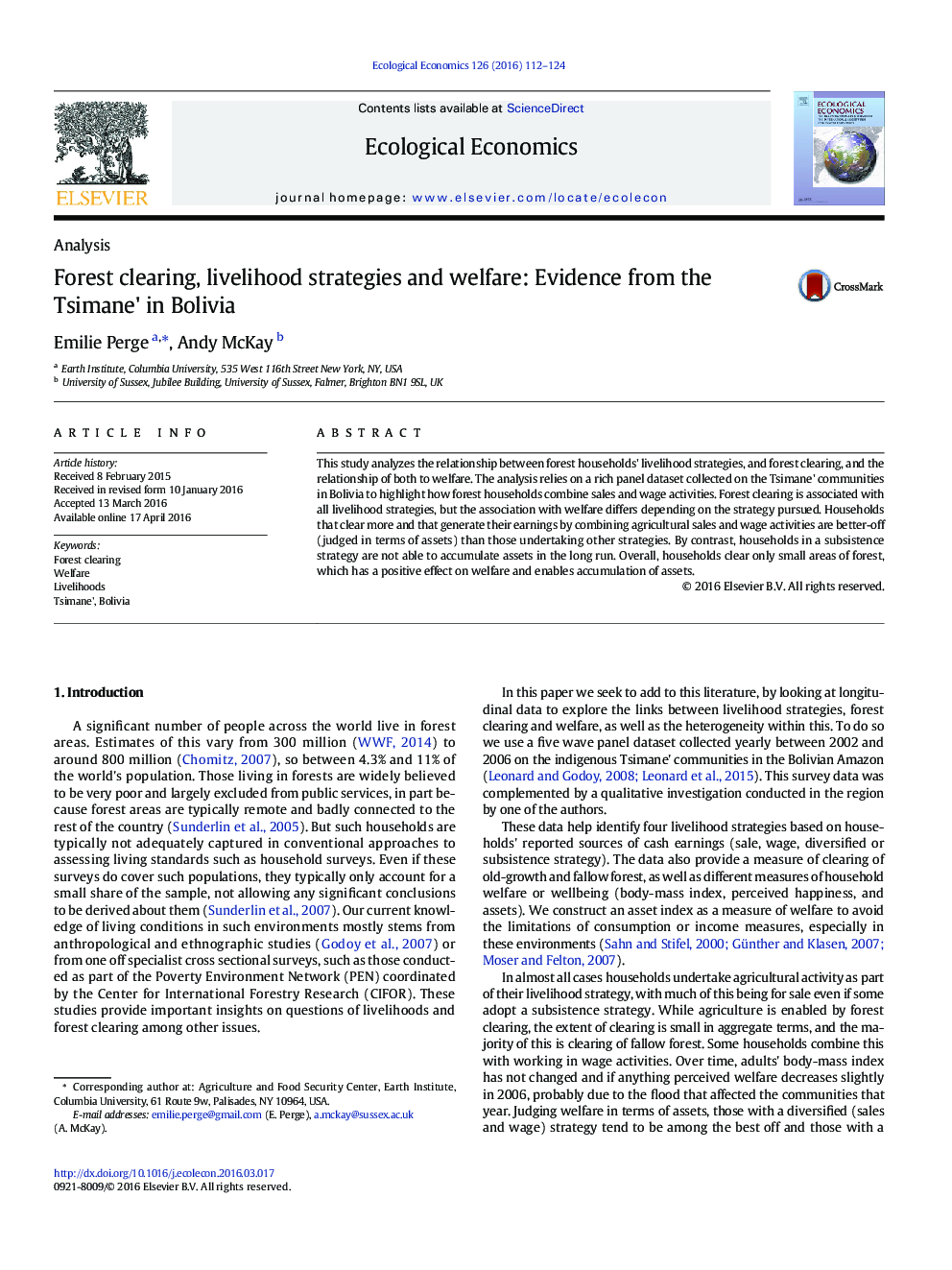| Article ID | Journal | Published Year | Pages | File Type |
|---|---|---|---|---|
| 5049151 | Ecological Economics | 2016 | 13 Pages |
This study analyzes the relationship between forest households' livelihood strategies, and forest clearing, and the relationship of both to welfare. The analysis relies on a rich panel dataset collected on the Tsimane' communities in Bolivia to highlight how forest households combine sales and wage activities. Forest clearing is associated with all livelihood strategies, but the association with welfare differs depending on the strategy pursued. Households that clear more and that generate their earnings by combining agricultural sales and wage activities are better-off (judged in terms of assets) than those undertaking other strategies. By contrast, households in a subsistence strategy are not able to accumulate assets in the long run. Overall, households clear only small areas of forest, which has a positive effect on welfare and enables accumulation of assets.
